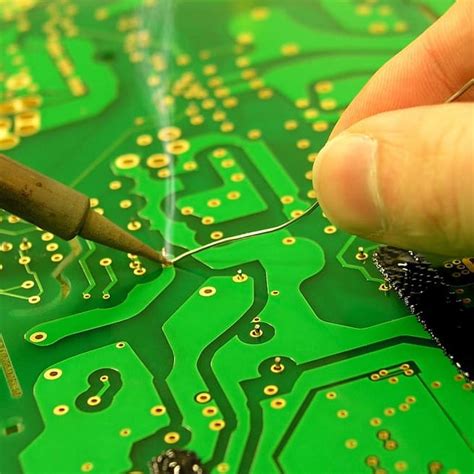Copper Core PCB: Revolutionizing Thermal Management in Electronics
Introduction
Printed Circuit Boards (PCBs) are the backbone of modern electronics, providing the necessary platform for electrical connections and component mounting. As electronic devices continue to shrink in size while increasing in power and complexity, managing heat dissipation has become a critical challenge. Traditional PCBs, typically made of FR-4 material, often struggle to efficiently dissipate heat, leading to potential performance degradation and reduced lifespan of electronic components. Enter Copper Core PCBs—a specialized type of PCB designed to address these thermal management issues. This article explores the structure, benefits, applications, and future prospects of Copper Core PCBs.
What is a Copper Core PCB?
A Copper Core PCB, also known as a metal core PCB (MCPCB), features a base material made primarily of copper. Unlike conventional PCBs that use a fiberglass (FR-4) substrate, Copper Core PCBs have a copper substrate that offers superior thermal conductivity. The copper core acts as a heat sink, efficiently transferring heat away from critical components such as power transistors, LEDs, and other high-power devices.
Structure of Copper Core PCBs
The typical structure of a Copper Core PCB consists of the following layers:
- Copper Core Layer: The base layer is made of solid copper, which provides excellent thermal conductivity. This layer is responsible for dissipating heat generated by the components mounted on the PCB.
- Dielectric Layer: Above the copper core, a thin dielectric layer is applied. This layer electrically insulates the copper core from the circuit layers while still allowing heat to pass through. The dielectric material is chosen for its thermal conductivity and electrical insulation properties.
- Circuit Layer: The top layer(s) consist of the copper traces that form the electrical connections between components. This layer is similar to the conductive layer in traditional PCBs.
- Solder Mask: A solder mask is applied over the circuit layer to protect the copper traces from oxidation and prevent solder bridges during assembly.
- Silkscreen: The final layer is the silkscreen, which includes labels, component identifiers, and other markings to aid in assembly and troubleshooting.
Advantages of Copper Core PCBs
- Superior Thermal Conductivity: Copper has a thermal conductivity of approximately 385 W/m·K, significantly higher than that of FR-4 (0.3 W/m·K). This allows Copper Core PCBs to efficiently dissipate heat, reducing the risk of overheating and improving the reliability of electronic components.
- Enhanced Durability: The robust copper core provides mechanical strength, making the PCB more resistant to physical stress and thermal cycling. This is particularly beneficial in applications where the PCB is subjected to harsh environments.
- Improved Performance: By maintaining lower operating temperatures, Copper Core PCBs help ensure that electronic components operate within their optimal temperature range, leading to better performance and longer lifespan.
- Space Efficiency: Copper Core PCBs can often eliminate the need for additional heat sinks or cooling fans, saving space and reducing the overall size of the electronic device.
- Versatility: These PCBs are suitable for a wide range of applications, from high-power LED lighting to automotive electronics, where effective thermal management is crucial.

Applications of Copper Core PCBs
- LED Lighting: High-power LEDs generate significant heat, which can affect their performance and longevity. Copper Core PCBs are widely used in LED lighting applications to ensure efficient heat dissipation.
- Automotive Electronics: The automotive industry demands reliable and durable electronics capable of withstanding high temperatures and harsh conditions. Copper Core PCBs are used in engine control units, power converters, and LED headlights.
- Power Electronics: Devices such as power supplies, inverters, and motor controllers benefit from the enhanced thermal management provided by Copper Core PCBs.
- Telecommunications: High-frequency and high-power telecommunications equipment often requires effective heat dissipation to maintain performance and reliability.
- Industrial Equipment: Machinery and industrial equipment that operate in high-temperature environments can benefit from the durability and thermal management of Copper Core PCBs.
Future Prospects
As the demand for more powerful and compact electronic devices continues to grow, the importance of effective thermal management will only increase. Copper Core PCBs are poised to play a crucial role in meeting these demands. Advances in materials science and manufacturing techniques are expected to further enhance the performance and affordability of Copper Core PCBs, making them accessible to a broader range of applications.
Moreover, the integration of Copper Core PCBs with emerging technologies such as 5G, Internet of Things (IoT), and electric vehicles (EVs) will drive innovation and expand their use in new and exciting ways. Researchers are also exploring the potential of hybrid materials that combine the thermal conductivity of copper with other advanced properties, such as flexibility or enhanced electrical performance.
Conclusion
Copper Core PCBs represent a significant advancement in PCB technology, offering unparalleled thermal management capabilities that are essential for modern high-power and high-density electronic devices. Their superior thermal conductivity, durability, and performance make them an ideal choice for a wide range of applications, from LED lighting to automotive electronics. As technology continues to evolve, Copper Core PCBs will undoubtedly remain at the forefront of innovation, enabling the development of more efficient, reliable, and compact electronic systems.








